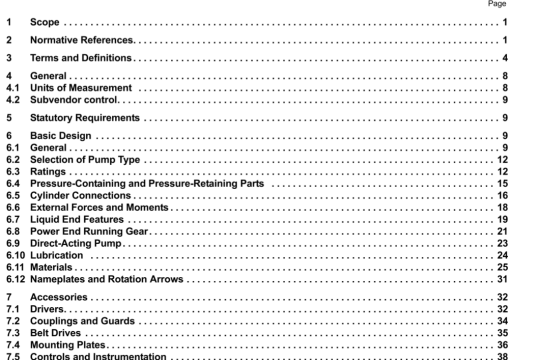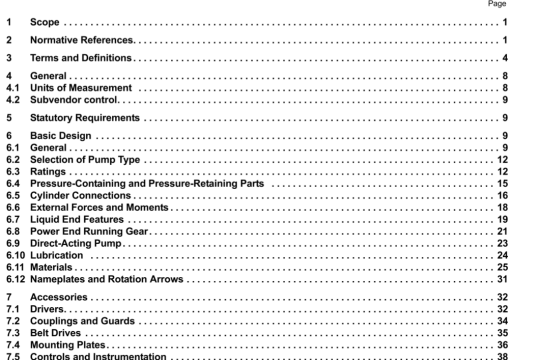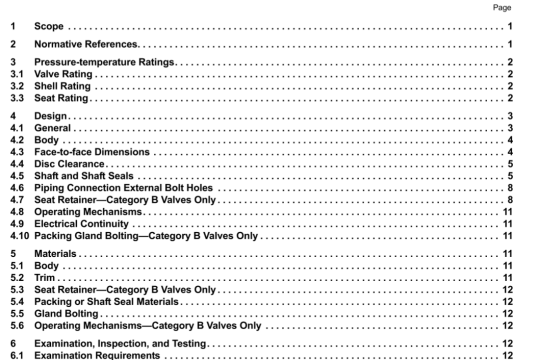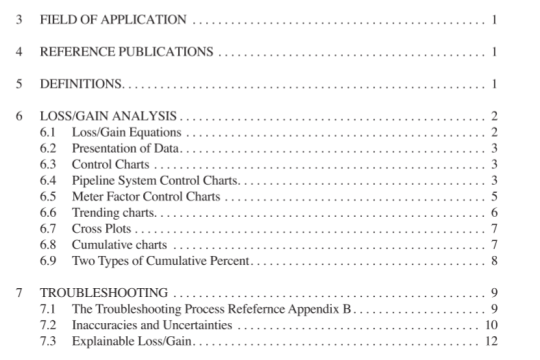API RP 520-2:2003(2011) pdf download
API RP 520-2:2003(2011) pdf download.sizing, Selection, and lnstallation of Pressure-Relieving Devices inRefineries Part ll—Installation.
4.6 RUPTURE DISK DEVICES IN COMBINATiON WITH PRESSURE-RELIEF VALVES
A rupture disk device may be used as the sole pressure- relief device, or it may be installed between a pressure-relief valve and the vessel or on the downstream side of a pressure- relief valve (see Figure 8).
When a rupture disk device is used between the pressure- relief valve and the protccted vessel, the space between the rupture disk and the pressure-relief valve shall have a free vent, pressure gauge. tryeock. or other suitable telltale indicator. A non-vented space with a pressure gage without alarms or other indication devices is not recommended as a suitable telltale indicator. Users are warned that a rupture disk will not burst in tolerance if back pressure builds up in a non-vented space between the rupture disk and the pressure-relief valve. which will occur should leakage develop in the ruure disk due to corrosion or other cause. Only non-fragmenting rupture disk devices may be used beneath a pressure-relief valve.
Rupture disks may not be available in all sizes at lower pressures: therefore. for these low-pressure applications the available rupture disk may have to be larger than the nominal size of the inlet piping and pressure-relief valve.
Refer to API kP 520, Part I for additional information related to the combination capacity factor when a rupture disk is installed in combination with a pressure-relief valve.
4J PROCESS LATERALS CONNECTED TO INLET PIPING OF PRESSURE-RELIEF VALVES
Prm.sxss laterals should generally not be connected to the inlet piping of pressure-relief valves (see Figure 9). Exceptions should be analyzed caretimlly to ensure that the allowable pressure drop at the inlet of the pressure-relief valve is not exceeded under simultaneous conditions of rated how through the pressure-relief valve and maximum possible (low through the process lateral.
4.8 11JRBULENCE IN PRESSURE-RELIEF DEVICE IN LETS
See 93 for information regarding the effects of turbulence on pressure-relief valves.
5 Discharge Piping From Pressure-Relief Devices
5i GENERAL REQUIREMENTS
Auto-refrigeration during discharge can cool the outlet of the pressure-relief device and the discharge piping to the point that brittle fracture can occur. Piping design. including material selection, must consider the expected discharge temperature.
5.2 SAFE DISPOSAL OF RELIEVING FLUIDS
For a comprehensive source of infornation about the safe disposal of various relieving fluids, see API RP 521.
5.3 BACK PRESSURE LIMITATIONS AND SIZING OF PIPE
When discharge piping for pressure-relief valves is designed. consideration should be given to the combined effect of superimposed and built-up back pressure on the operating characteristics of the pressure-relief devices. The discharge piping system should be designed so that the hack pressure docs not exceed an acceptable value for any pressure-relief device in the system. See API RP 520 Part I for limitations on back pressure.
When rupture disks arc used as the sole relieving device and the discharge is to a closed system. the effect of the superimposed hack pressure on the bunIing pressure for the disk must be considered.
The rated capacity of a conventional spring loaded, balanced spring loaded or pop action pilot-operated pressure- relief valve should typically be used to size the atmospheric vent piping or the discharge line from the pressure-relief valve to the relief header. Common relief header piping in closed discharge systems should be sized using the protected systems required relieving capacity.
For a modulating pilot-operated pressure-relief valve, the discharge piping can be sized using the required relieving capacity of the system that the valve is protecting.
Whenever the atmospheric vent, discharge piping or coin- mon relief header piping is sized using the system’s required relieving capacity instead of the rated capacity of the valve. the back pressure should be re-checked whenever changes are made to the process that effect the required relieving capacity of the system the valve is protecting. Additional information on sizing of discharge piping systems for vapor or gas service is covered in API RP521.




